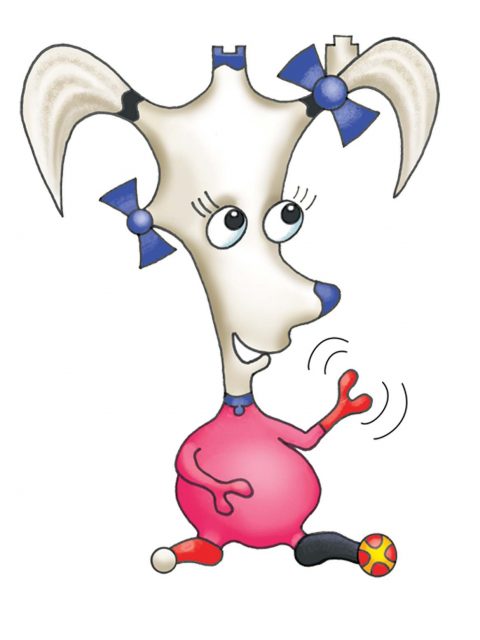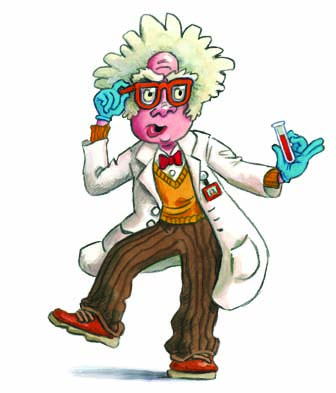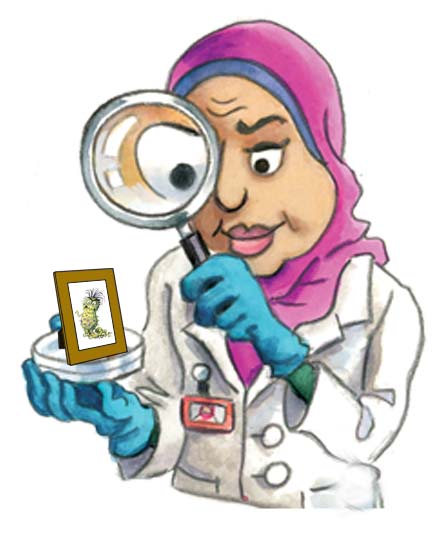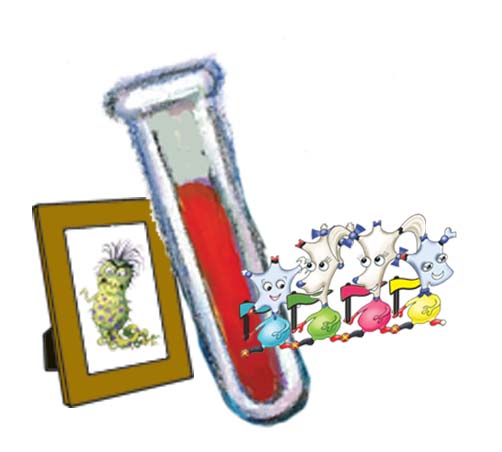Do you want to be famous? It sounds good. Legions of fans, maybe oodles of money, living the dream.
But what happens when your every move is being watched? You can’t even live your normal life without someone viewing it?
The person that once loved to party might want to keep their distance instead.
But this is not just for popstars and film stars
Viruses can become as famous too ….

Hi, I’m Alina. Me, my friends Tristan, Crispin and Gina and lots of our cousins make the set of rules and instructions responsible for making every living thing out there.
Collectively we call ourselves DNA. Today however, Tristan isn’t playing and instead he has sent his twin brother Udan to join in. Udan doesn’t do DNA. Instead we make a different set of rules known as RNA.
Today I am in the RNA in a virus called Coronavirus. Its real name is SARS-CoV-2 but not many people call it that.
Our virus has got really good at infecting people in the past few weeks and has whizzed all around the world. We are famous.
Sometimes we cause real problems and so not everybody wants to catch us. You have all been staying in your homes and washing your hands so we can’t infect you.
No one wants to get ill. So you are trying to find out our every move- so you can avoid us.
Testing
We are far too small to see.
So scientists have developed some tests to find us.
The first is designed to see if we are in your body and causing infection. Sometimes we make you really ill and you don’t need a test to see that! But if you don’t have any symptoms, then how do you know we are there?
That’s where the tests come in.
First you need copies of us in the virus. Something that looks like a long cotton bud is inserted into your nose. Whoever is collecting us waggles it around for a bit before putting it in a really clean tube with no other Dinky Amigos (or viruses!)
This is called a nasopharyngeal swab and collects the virus hanging around in your nose and back of your throat (waiting to be sneezed or coughed on to someone else). This is taken to the lab where we are washed off into a liquid.
Because we are small, no one knows how many of us they have got with their swab. So the next step is to make more (or amplify) of us. The scientists call this bit a Polymerase Chain Reaction (or PCR) and it works using the Principle of Best Friends.

The Principle of Best Friends
Everyone knows that I am best friends with Tristan. Alina and Tristan. We are always together. Crispin and Gina are best friends too. Probably even better friends than we are.
Scientists know this and can use it for their test.
In the virus we are all lined up in a single row. (Even though there are 30,000 of us in the row, we are still only a fraction of the size of a human hair. No wonder no one can see us!)
The scientists introduce us to more Dinky Amigos (this time Tristan is with them!) and we make best friend pairs until we have a double row. I pair with Tristan and Gina pairs with Crispin.
Then our double row gets split apart and each of us gets to pair up again and make new rows. We have to do this for an hour or so, until there are over a million new double rows.
But we don’t mind – its’ fun.
What is less fun, though, is knowing that we are being watched. The new Dinky Amigos are made to carry a special dye. Every time we pair up with them, their dye sends a signal to a computer. Scientist can see this signal and can follow our pairings in real time. They know how pairs we have made and how long it took us to make them.
They don’t to test all 30,000 of us in the virus though. So the scientists are careful to only let some of us form pairs with our best friends.
When there are enough rows, scientists look for a pattern. Each virus has a special pattern. If our pattern matches up, they know we come from the right virus.
If they know we come from the right virus, they also know that you are infected.
You can then stay away from other people so you don’t pass the virus on. Our virus might not cause a problem for you, but it might for someone else.

Too much testing?
If you have just caught the virus, we might not show be in your throat or nose for a couple of days – we will be busy infecting cells in your airways. So you would need another test in a few days. Then another one a few days after that! Then you would have to keep testing yourself if you were having a lot of contact with people outside your house.
You might need to keep testing for months!
But maybe you’ve had the virus already. You would never know with that kind of test. You need a different one.
So have you had it?
The special pattern can’t help you here, but something else can. A photo.
You need a serology test. (That’s really just a posh word for blood test)
When you get infected by us (or anything else for that matter!) your body tries to protect you. This is done by something called your immune system. One of the things your immune system does is make a photo of the thing that infected you. It doesn’t make a photo of the whole virus, just a small part of it known as an antigen.
The photo your body makes is known as an antibody. (This test is also called an antibody test.)
By finding out whether you have this antibody, scientists can work out whether you have been infected by our virus or not.
Scientists use our Dinky Amigo instructions to make lots of viral antigen. Then they put it on a special piece of paper.
The paper is put in a sample of your blood. If there are any antibodies in your blood, they will stick to the virus antigen that we just made.
You have lots of antibodies in your blood, but only the matching one will stick. If it does, then you have been infected with the virus.
As the antibodies and antigens are really tiny, this test uses colour as well, so scientist can see when there is a match.
It takes your body a few weeks to make the antibody photo, so if you get tested too soon, the result won’t show that you have had the virus.
If you have antibodies, it is unlikely you can be infected by the virus again. So you won’t be ill, and you can’t pass it on!

Countries can use an antibody test to see how much of its population has been infected by our virus. The higher the number, the harder it is for us to keep infecting people. We need to jump from one person to the next and if everyone has a photo of us, then we can’t infect enough people to survive.
If none has a photo, we can infect 2-3 people at the same time! As soon as people start carrying a photo, we can’t just jump to anyone and it becomes harder to infect them.
If 60% of the population carried a photo of us, it would be so hard to infect anyone, that we might not be able to make anyone ill.
But some people can’t risk catching our virus just to get the photo. For those people, scientists are trying to make a photo for them instead. It is called a vaccine and until it is ready, famous or not, they might just have to keep their distance.
Enjoyed this? Subscribe to the Dinky Digest
For a greater insight into what your DNA can do for you, join the Dinky Digest
to enjoy regular news, views and more. (You must be over 13 to subscribe)

